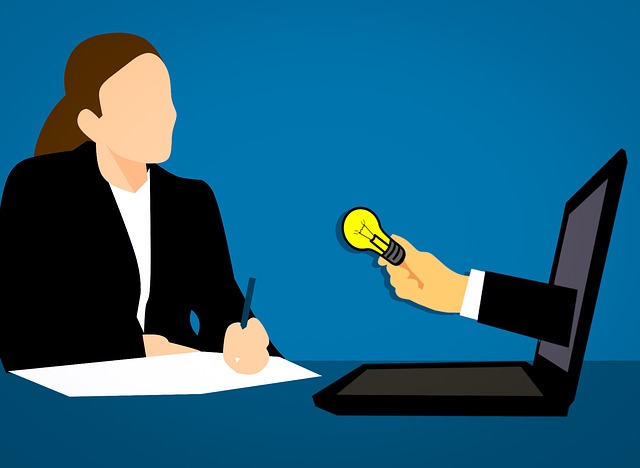Are you tired of sending generic, one-size-fits-all emails to your customers? It’s time to take your email marketing to the next level by embracing the power of personalization. In the world of email marketing, personalization is like a breath of fresh air on a hot summer day. It’s like adding a touch of magic to your campaigns, making your customers feel seen, understood, and valued.
But wait, don’t dismiss mass emailing just yet. While personalization has its merits, mass emailing can also be a valuable tool in your marketing arsenal. It allows you to reach a wide audience with a single click, saving you time and effort.
So, which approach is better for your business: email personalization or mass emailing? In this article, we’ll dive deep into the benefits of each strategy, explore the importance of segmenting your email list, analyze the role of personalization in email marketing, and discuss how automation can enhance your mass emailing efforts.
Join us as we uncover the secrets to finding the perfect balance between these two powerful tactics.
Key Takeaways
- Personalization in email marketing leads to higher open rates and engagement levels, as well as making customers feel valued and understood.
- Mass emailing allows reaching a wide audience with a single click, saving time and effort while increasing brand visibility and awareness.
- Segmenting email lists is crucial for tailoring messaging to specific groups, avoiding sending irrelevant content, and increasing chances of engagement and conversion.
- Automation in mass emailing, such as utilizing drip campaigns and autoresponders, can optimize email marketing efforts and increase email engagement when set up properly.
Understanding the Benefits of Email Personalization
You’ll quickly see the benefits of email personalization when you start receiving higher open rates and engagement levels from your audience. By sending customized content that is tailored to the individual needs and preferences of your subscribers, you can capture their attention and make them feel valued.
Personalized emails create a sense of connection and relevance, which leads to improved customer engagement. When your audience feels that you understand their specific interests and concerns, they’re more likely to open your emails, click on links, and take action. This can result in higher conversion rates and ultimately lead to increased sales and revenue for your business.
Now, let’s explore the advantages of mass emailing and how it can complement your email personalization efforts.
Exploring the Advantages of Mass Emailing
There’s no denying the perks of blasting out a single message to a large audience, like reaching a broad spectrum of people with just a click. When it comes to mass emailing, there are several advantages to consider:
-
Time-saving: With mass emailing, you can quickly send out a message to a large number of recipients, saving you time and effort.
-
Cost-effective: Mass emailing allows you to reach a wide audience without incurring significant costs, such as printing or postage fees.
-
Increased visibility: By sending out a mass email, you can increase your brand’s visibility and awareness among a large group of people.
However, it’s important to acknowledge the disadvantages of mass emailing as well, such as the potential for lower engagement and the risk of being marked as spam. To overcome these challenges, it’s crucial to segment your email list and tailor your messages to specific groups of recipients. This ensures that your emails are relevant and personalized, leading to higher engagement and better results.
The Importance of Segmenting Your Email List
To truly maximize the potential of your email marketing strategy, it’s essential to recognize the significance of segmenting your email list. By dividing your subscribers into specific segments based on their demographics, preferences, and behaviors, you can tailor your messaging to resonate with each group individually.
This allows you to send targeted messages that are more likely to capture their attention and drive engagement. Segmenting your email list also helps you avoid sending irrelevant content to subscribers who may not be interested, reducing the chances of them unsubscribing or marking your emails as spam.
By implementing effective segmentation strategies, you can ensure that your emails are highly relevant and personalized, increasing the chances of achieving your marketing goals. Moving forward, let’s delve into analyzing the role of personalization in email marketing.
Analyzing the Role of Personalization in Email Marketing
Implementing personalized email marketing strategies can significantly enhance the effectiveness of your campaigns and increase customer engagement. By using personalization strategies, you can tailor your emails to cater to the specific needs and preferences of your recipients. This level of customization not only improves open rates but also builds trust and loyalty with your audience.
Personalized emails make your customers feel valued and understood, leading to higher click-through rates and conversions. Through personalization, you can address your customers by name, recommend products based on their previous purchases, and send targeted offers that align with their interests. By analyzing customer data and behavior, you can create highly personalized email campaigns that are more likely to resonate with your audience.
Transitioning into the subsequent section about harnessing the power of automation in mass emailing, you can take your personalization efforts to the next level.
Harnessing the Power of Automation in Mass Emailing
If you want to optimize your mass email marketing efforts, there are three key points you need to focus on:
-
Setting up drip campaigns and autoresponders: By setting up drip campaigns and autoresponders, you can deliver targeted and personalized content to your subscribers at the right time, increasing engagement and conversions.
-
A/B testing and optimization: A/B testing and optimization allow you to experiment with different elements of your emails, such as subject lines or call-to-action buttons, to determine what resonates best with your audience.
-
Tracking and analyzing campaign performance: Lastly, tracking and analyzing campaign performance gives you valuable insights into the effectiveness of your emails, enabling you to make data-driven decisions and continuously improve your email marketing strategy.
Setting up Drip Campaigns and Autoresponders
Setting up drip campaigns and autoresponders can significantly increase email engagement, with studies showing that businesses that use these strategies experience a 119% increase in click-through rates. To maximize the effectiveness of your drip campaign, consider the following strategies:
-
Segment your audience: Tailor your messages based on specific customer behaviors or demographics. This personalization increases the chances of engagement.
-
Time your emails strategically: Use autoresponders to send emails at specific intervals, such as after a purchase or when a customer signs up for your newsletter. This keeps your brand fresh in their minds.
-
Provide valuable content: Drip campaigns are an opportunity to educate and engage your audience. Share relevant information, tips, and exclusive offers to keep them interested.
By implementing these drip campaign strategies and leveraging the power of autoresponders, you can effectively nurture leads and boost customer engagement.
Moving forward, let’s explore the benefits of a/b testing and optimization in email personalization.
A/B Testing and Optimization
Maximizing the impact of your email campaigns involves experimenting with A/B testing and optimization techniques. A/B testing allows you to compare different versions of your email to see which one performs better. By testing variables such as subject lines, content, and call-to-action buttons, you can identify what resonates best with your audience. Optimization strategies involve using the insights gained from A/B testing to improve your email campaigns over time. This includes refining your targeting, personalization, and timing. To visualize the effectiveness of A/B testing and optimization, consider the following table:
| Test Variable | Version A | Version B |
|---|---|---|
| Subject Line | "Limited Time Offer!" | "Exclusive Deal Inside!" |
| Content | Short and punchy | Detailed and informative |
| Call-to-Action | "Buy Now" | "Learn More" |
By analyzing the results, you can make data-driven decisions to optimize your email campaigns. Transitioning into the next section about tracking and analyzing campaign performance, it’s important to understand the impact of these techniques on your overall email marketing strategy.
Tracking and Analyzing Campaign Performance
To truly gauge the success of your email campaigns, you need to become a detective, carefully analyzing the clues left behind by tracking and analyzing campaign performance.
Tracking performance allows you to gather valuable data on how your emails are performing, such as open rates, click-through rates, and conversions.
Analyzing the results of your campaigns helps you identify trends, understand what’s working and what isn’t, and make data-driven decisions to improve future campaigns.
-
Tracking performance: Monitor key metrics like open rates, click-through rates, and conversions to understand how your emails are performing.
-
Analyzing results: Identify trends and patterns in campaign performance to gain insights and make data-driven decisions.
-
Improving future campaigns: Use the insights gained from tracking and analyzing to optimize your email marketing strategy and achieve better results.
By tracking performance and analyzing results, you can fine-tune your email campaigns for maximum effectiveness.
This sets the stage for the subsequent section about finding the right balance: an integrated approach to email marketing.
Finding the Right Balance: Integrated Approach to Email Marketing
Strike the perfect balance in your email marketing strategy by integrating personalized content with mass emailing. This ensures your audience receives tailored messages while still reaching a wide range of potential customers. Finding the right approach is crucial to effectively target your audience.
Start by segmenting your email list based on demographics, interests, or previous interactions. This allows you to send targeted campaigns to specific groups, increasing the chances of engagement and conversion. Personalization adds a personal touch to your emails, making recipients feel valued and increasing the likelihood of a positive response.
However, mass emailing should not be overlooked. It allows you to reach a larger audience, increasing brand visibility and potential customer reach. By combining personalized content with mass emailing, you can maximize the effectiveness of your email marketing campaigns and achieve greater results.
Frequently Asked Questions
What are some common challenges faced when implementing email personalization strategies?
When implementing email personalization strategies, you may face some common challenges.
One challenge is collecting and managing the necessary customer data to personalize each email effectively.
Another challenge is creating dynamic content that resonates with each recipient.
Additionally, ensuring deliverability and avoiding spam filters can be a hurdle.
However, despite these challenges, implementing email personalization strategies can greatly improve customer engagement and increase conversion rates.
By tailoring your emails to individual recipients, you can deliver more relevant and compelling content, leading to better results for your business.
How can mass emailing be effective in reaching a large audience while still maintaining a personalized touch?
To effectively reach a large audience while still maintaining a personalized touch in mass emailing, you need to leverage targeting efficiency and overcome scalability limitations.
By segmenting your email list based on relevant criteria such as demographics or behavior, you can tailor your message to specific groups.
Additionally, using dynamic content and personalization tokens can help create a more personalized experience.
It’s important to strike a balance between reaching a wide audience and delivering personalized content to maximize the impact of your mass emails.
What are some best practices for segmenting an email list to ensure maximum engagement?
To ensure maximum engagement, you need to implement effective segmentation strategies for your email list.
Start by categorizing subscribers based on demographics, purchase history, or engagement levels. This will allow you to create targeted content that resonates with specific segments.
Personalization is key here, as it helps build a connection with your audience. By tailoring your emails to their interests and needs, you can significantly improve engagement and ultimately drive better results for your email campaigns.
Can personalization in email marketing lead to higher conversion rates?
Personalization in email marketing can indeed lead to higher conversion rates. By tailoring your emails to individual recipients, you can create a more personalized and engaging experience. This can result in increased open rates, click-through rates, and ultimately, more conversions.
To improve email conversion rates, consider segmenting your email list based on demographics, purchase history, and behavior. Additionally, use dynamic content and personalized subject lines to grab attention and make your emails more relevant to each recipient.
What are some key factors to consider when deciding whether to use automation in mass emailing?
When deciding whether to use automation in mass emailing, there are two key factors to consider: automation benefits and finding the right balance of personal touch.
Automation can streamline your email marketing efforts, saving time and increasing efficiency. However, it’s important to maintain a personal touch to engage your audience and avoid appearing impersonal.
Finding the right balance between automation and personalization is crucial for successful mass emailing campaigns. By incorporating automation benefits and maintaining a personal touch, you can achieve higher conversion rates and improve your overall email marketing strategy.
Conclusion
So, you’ve reached the end of the article and now you’re wondering, which is better: email personalization or mass emailing? Well, the answer is not so simple.
On one hand, email personalization allows you to connect with your audience on a deeper level, increasing engagement and conversion rates. On the other hand, mass emailing can reach a larger audience at once, maximizing your reach.
But here’s the thing, why choose one when you can have both? By finding the right balance and incorporating personalization into your mass emails, you can create a powerful integrated approach that grabs attention, drives results, and leaves a lasting impression.
So, don’t limit yourself. Embrace the best of both worlds and watch your email marketing soar.








